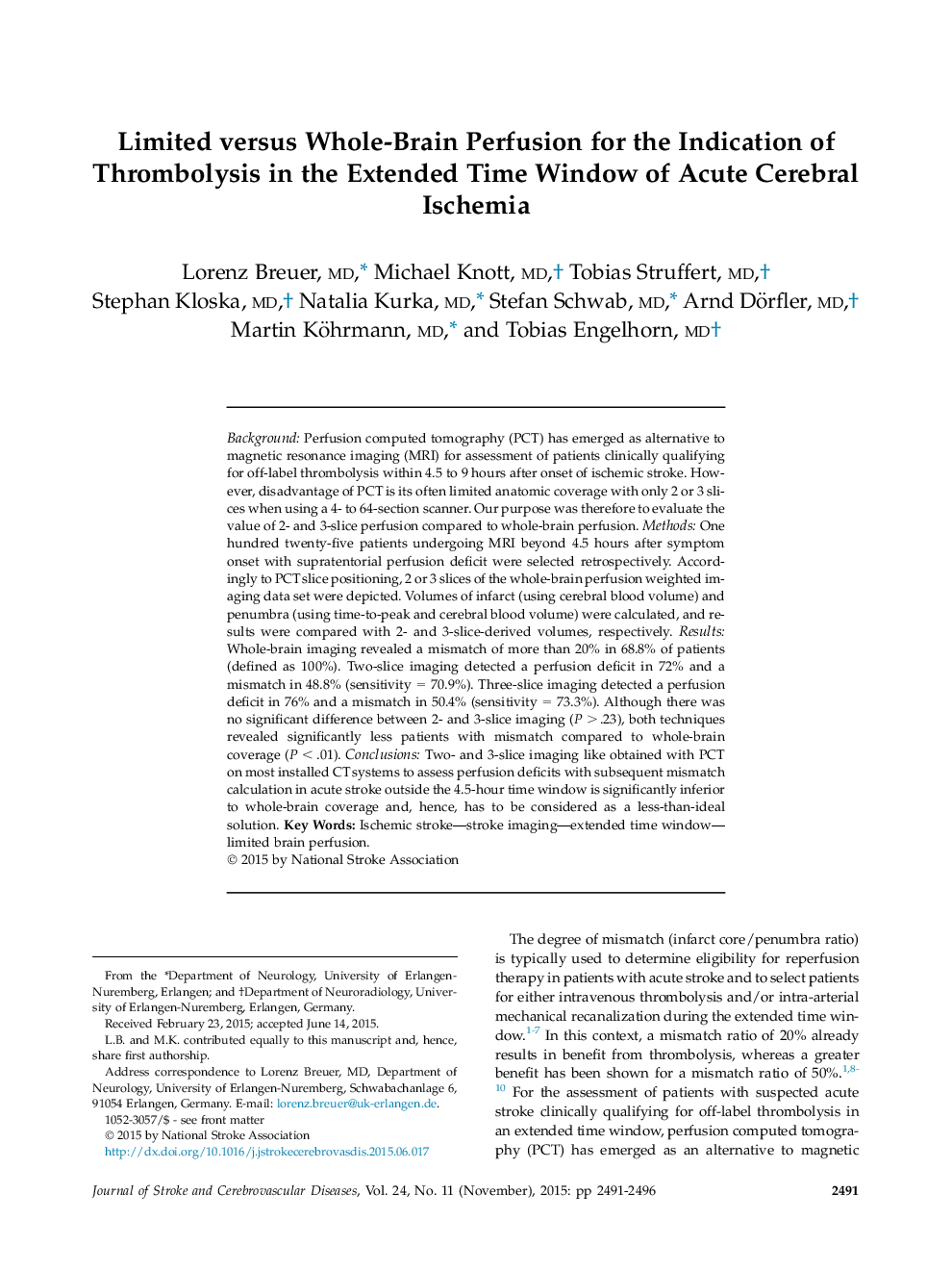| Article ID | Journal | Published Year | Pages | File Type |
|---|---|---|---|---|
| 2702417 | Journal of Stroke and Cerebrovascular Diseases | 2015 | 6 Pages |
BackgroundPerfusion computed tomography (PCT) has emerged as alternative to magnetic resonance imaging (MRI) for assessment of patients clinically qualifying for off-label thrombolysis within 4.5 to 9 hours after onset of ischemic stroke. However, disadvantage of PCT is its often limited anatomic coverage with only 2 or 3 slices when using a 4- to 64-section scanner. Our purpose was therefore to evaluate the value of 2- and 3-slice perfusion compared to whole-brain perfusion.MethodsOne hundred twenty-five patients undergoing MRI beyond 4.5 hours after symptom onset with supratentorial perfusion deficit were selected retrospectively. Accordingly to PCT slice positioning, 2 or 3 slices of the whole-brain perfusion weighted imaging data set were depicted. Volumes of infarct (using cerebral blood volume) and penumbra (using time-to-peak and cerebral blood volume) were calculated, and results were compared with 2- and 3-slice-derived volumes, respectively.ResultsWhole-brain imaging revealed a mismatch of more than 20% in 68.8% of patients (defined as 100%). Two-slice imaging detected a perfusion deficit in 72% and a mismatch in 48.8% (sensitivity = 70.9%). Three-slice imaging detected a perfusion deficit in 76% and a mismatch in 50.4% (sensitivity = 73.3%). Although there was no significant difference between 2- and 3-slice imaging (P > .23), both techniques revealed significantly less patients with mismatch compared to whole-brain coverage (P < .01).ConclusionsTwo- and 3-slice imaging like obtained with PCT on most installed CT systems to assess perfusion deficits with subsequent mismatch calculation in acute stroke outside the 4.5-hour time window is significantly inferior to whole-brain coverage and, hence, has to be considered as a less-than-ideal solution.
